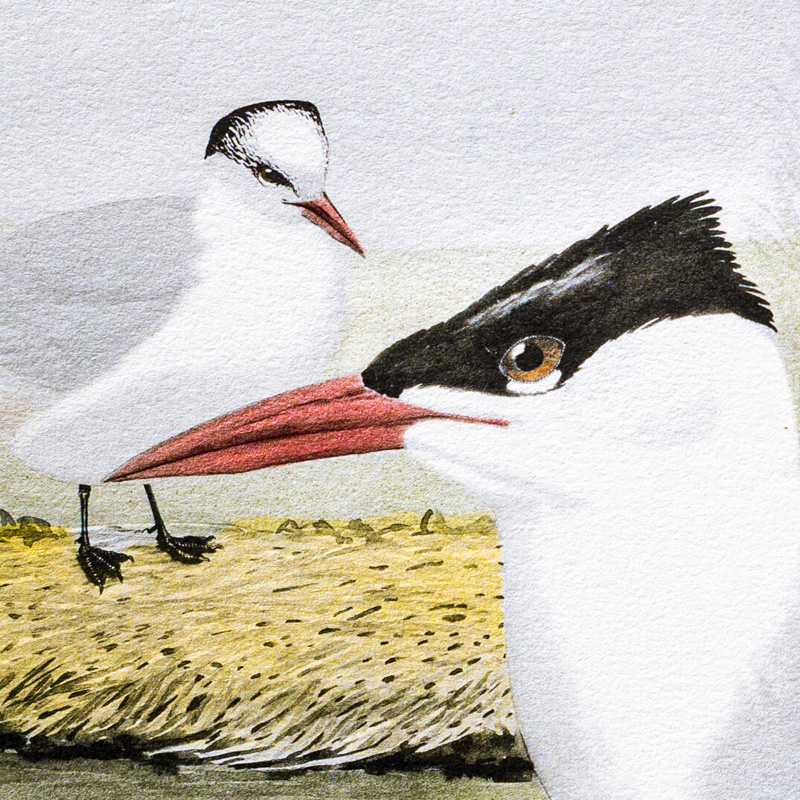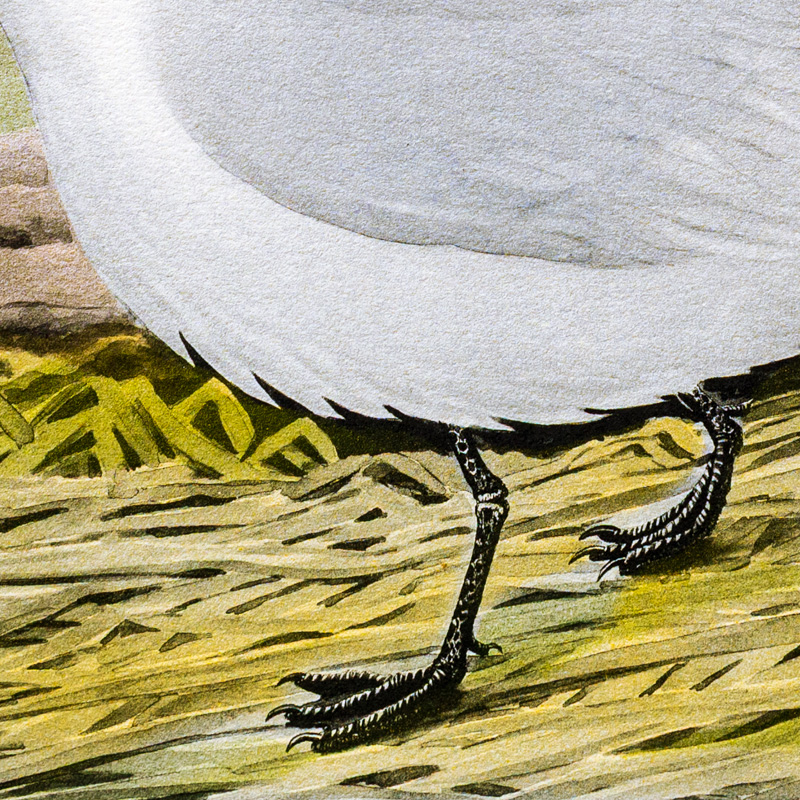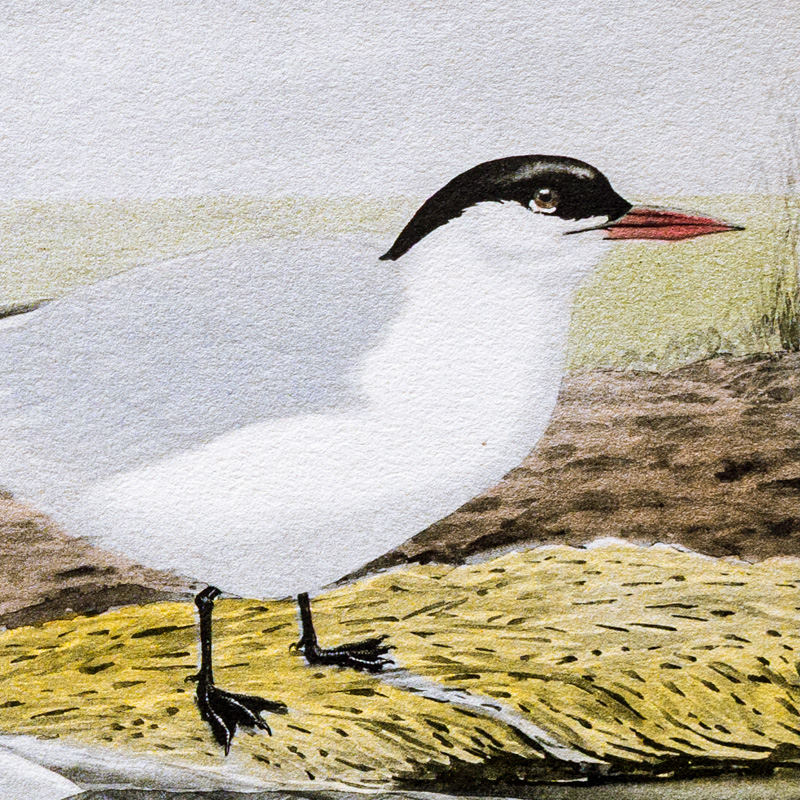






Unknown
1932
2
64
A team of dedicated board members, volunteers, and student interns has published every page in Volume 9. This volume includes 360 images of paintings and lyrical descriptions of birds, now available online for everyone to enjoy anywhere in the world. This is a monumental task. Each volume requires approximately 400 hours to photograph, edit, transcribe, catalog, and publish online. We need your support to complete this work.
If you're tech-savvy, have a good eye, are meticulous with details, and love structured data, please consider volunteering by emailing us at hello@rexbrasher.org.
We encourage all bird lovers and supporters to consider a monetary donation to support our mission to make Rex's work available for everyone. You can provide a one-time or recurring donation online.
In size and belligerency the CASPIANS dominate the family.
Many years ago I was crouched in a blind on Shinnecock Bay waiting tensely for a flock of Yellowlegs to come within range of my single-barrel 30-gage, when a harsh ha, ha, ha, directly overhead, scared me.
A side glance showed a large white bird with red bill pointed at my cap and coming like a javelin. I ducked, waved an arm and the menace swung off with a jeering cry of triumph. As did Thoreau's Indian, he probably "like play sometime!" Anger at intrusion may result in part of a colony suddenly destroying their own eggs. Usually the nesting birds work off their vexation in "cussing" and "fell swoops."
Any intrusion on the sacred area around each home means fight. Bird-children who wander are turned back and too venturesome youngsters are apt to have their trips terminated by death at the bills of nabors.
North America from southern British Provinces southward, rare in East north of Carolinas.